OPINION
Top 10 Airports In Africa With The Best Staff In 2024
Published
7 months agoon

Air travel in Africa is soaring! More and more people are choosing to fly, which is fueling investment in bigger and better airports across the continent. This improved infrastructure is making it easier than ever to travel between African countries, boosting both business and tourism. This could be because of the best airport staff we have in Africa.
A fantastic airport experience isn’t just about having the most high-tech gadgets or stunning architecture. The staff who work there are equally important! Their friendliness, helpfulness, and efficiency can significantly impact your overall travel experience.
To recognise airports with exceptional staff, a company called Skytrax recently conducted a survey in Africa. They evaluated various aspects of staff service, including their friendliness, helpfulness, and efficiency. This assessment considered frontline staff across different airport departments, including information desks, security checkpoints, shops, and restaurants.
The first on the list for best airport staff in Africa is:
1. Cape Town International Airport (South Africa)
This airport consistently ranks highly for its modern facilities and excellent passenger experience. In 2024, it went a step further by taking the top spot for having the friendliest, most helpful, and most efficient staff in Africa.
Cape Town International Airport in South Africa claimed the title of having the best airport staff in Africa. Passengers consistently praised their professionalism, courteous demeanour, and ability to navigate any situation smoothly.
Whether you need help finding your gate, navigating customs, or simply having a question, Cape Town International Airport staff are known for going the extra mile to ensure a positive travel experience.
But Cape Town wasn’t alone! Two other airports in Africa impressed travellers with their outstanding staff:
2. Durban King Shaka Airport (South Africa)
Durban’s airport isn’t just known for its impressive design. Passengers also praised the staff for their welcoming personalities and ability to get things done efficiently.
Travellers consistently reported feeling greeted with a smile and appreciated the staff’s attentiveness to their needs, whether it was navigating baggage claims or finding a good place to grab a bite to eat before their flight.
3. Mauritius Airport (Mauritius)
Known as a paradise island getaway, Mauritius boasts an airport that matches its idyllic reputation. The staff here are renowned for their courteous and helpful service, making your arrival and departure a breeze.
Many travellers commented on the staff’s genuine warmth and willingness to assist with any questions or requests. This personal touch goes a long way in setting the tone for a relaxing and enjoyable vacation in Mauritius.
Here’s a look at the other airports in Africa listed for having best staff in 2024:
4. Casablanca Airport (Morocco)
Travellers lauded the Casablanca Airport staff for their efficiency and clear communication, especially when it came to navigating the security process and customs.
5. Seychelles Airport (Seychelles)
The staff at Seychelles Airport were praised for their friendly and laid-back demeanour, perfectly reflecting the relaxed atmosphere of the island nation.
6. Kigali Airport (Rwanda)
Kigali Airport staff impressed travellers with their professionalism and helpfulness. Passengers reported a smooth and efficient travel experience, thanks to the attentiveness of the staff.
7. Marrakech Airport (Morocco)
The staff at Marrakech Airport were recognised for their warm hospitality and willingness to go the extra mile to assist passengers.
8. Nairobi Airport (Kenya)
Nairobi Airport staff received praise for their efficiency and clear communication, especially when dealing with large crowds.
9. Addis Ababa Airport (Ethiopia)
Passengers at Addis Ababa Airport commended the staff for their professionalism and ability to handle diverse travel needs.
10. Rabat Airport (Morocco)
Rabat Airport staff were recognised for their friendly and helpful service, making travellers feel welcome and well-cared for.
You may like
-
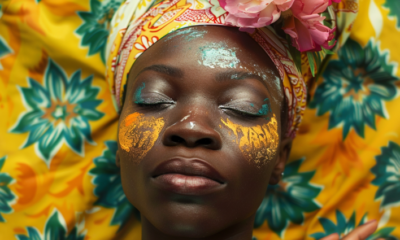

5 Awesome Ancient African Beauty Practices
-


Moniepoint Reaches African Unicorn Status With $110 Million Funding Boost
-


Idris Elba To Relocate To Africa To Support Its Film Industry
-


Top 5 Smartphone Brands Dominating Africa’s Market
-


Lagos Is Africa’s Second Cheapest City You Can Live In
-


Here Are The Top 5 Cleanest Cities In Africa

As a Nigerian adult, you understand that December isn’t merely a festive season—it’s the ultimate billing battlefield. In this case, knowing how to avoid billing this December can be your financial lifeline.
The month transforms into an elaborate financial obstacle course where every social engagement becomes a potential wallet-draining experience.
Picture this: you’re suddenly expected to match expensive aso-ebi for your partner’s distant cousin’s wedding, shell out cash for elaborate office hangout festivities, purchase thoughtful gifts for an extensive network of friends and family, grab concert tickets for the hottest “detty December” events, and somehow maintain some semblance of financial sanity.
Each commitment is strategically designed to empty your bank account, with Sapa waiting eagerly in the wings to completely demolish your January savings.
The universe seems to have conspired with social expectations to orchestrate a complex financial challenge, transforming December into an unofficial billing Olympics where your wallet is the primary competitor.
But here’s the good news: you can become a strategic “shege survivor” by mastering how to avoid billing this December with calculated precision and smart financial manoeuvres.
In this comprehensive survival guide, we’ll explore tactical approaches to navigate the treacherous December spending landscape, ensuring you emerge victorious without sacrificing your financial stability or social reputation. Prepare to become the ultimate December financial ninja!
1. Always Complain Like It’s Your Birthright
Nobody wants to bill someone who complains every five minutes. If you consistently make a point of complaining about your financial situation whenever you get the chance, the likelihood of being asked for money will drop drastically.
The only exception is if you have people around you who are heartless and completely audacious—if that’s the case, there’s a solution in step two.
2. Trade Your Flashy Phone for a ‘Torchlight’
Do you see that iPhone 14 Pro Max of yours? That big phone that attracts unnecessary attention? It’s essentially a billboard screaming, “I’m open for billing!”
To avoid billing, sell it and invest the money in preparing for next year’s challenges. No one will suspect you of being a “billionaire in transit” if you’re using a humble Nokia torchlight or an old-school TECNO phone.
Picture this: someone asking you for money while you’re holding a phone that looks like it belongs in 2003. They might even feel sorry for you and give you some spare change.
The goal here is to avoid billing by making it clear you’re not the person with deep pockets.
3. Buy Okrika Clothes
As the saying goes at the “Okrika” stores, “na mumu dey go boutique.” Avoid billing by steering clear of designer clothes that scream wealth and immediately mark you as a target for requests.
Instead, buy “Okrika” (secondhand) clothes and proudly share how much you paid when people compliment you. Tell them, “You won’t believe how much this outfit cost; it was just 500 Naira!” and make sure to add, “I’m making do with the little I have…”
This strategy helps position you as the king or queen of thrift, ensuring that nobody dares to ask you for money or extravagant contributions.
4. Avoid Calls Like a Pro
Screen all your calls, and be strategic about who you answer. The call from your cousin in the village? We both know it’s not “Merry Christmas” they’re about to say—it’s more likely “I need money for the New Year.”
To avoid billing, activate your Do Not Disturb (DND) mode and only return calls from people who won’t ask for a handout.
If you must respond, use WhatsApp messages so you can carefully craft your excuses without feeling pressured.
5. Go Solo: Break Up With Your Partner
Let’s be real—being in a relationship is one of the major sources of billing in December. To avoid billing and enjoy some peace of mind, consider going solo this season.
Enjoy your money without worrying about shared expenses, and enter the New Year without emotional or financial baggage. You deserve it!
When you want to avoid billing in December, it isn’t just about saving money—it’s about preserving your sanity and entering January without the financial hangover.
These strategies will help you avoid billing and ensure a peaceful, financially secure holiday season. When you’re sipping zobo in the comfort of your home instead of crying over debt recovery meetings, remember to thank me.
If you found these tips helpful and want more, visit here. And remember not to fall in love this December!
OPINION
11 Ways To Build Emotional Connection With Your Woman
Published
1 month agoon
December 1, 2024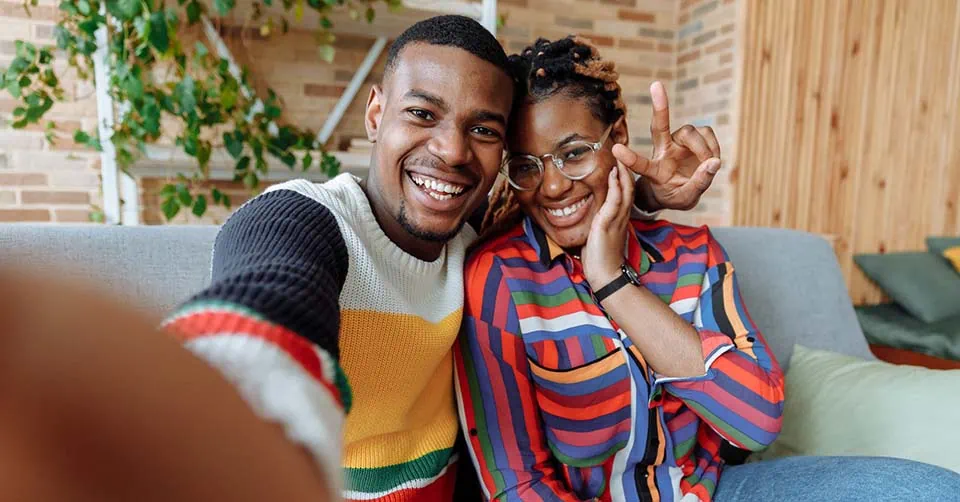
Building a deep emotional connection is crucial for lasting romantic relationships. Understanding how to build an emotional connection with a woman requires genuine effort, empathy, and consistent communication.
Building a strong emotional connection with your woman is more than just physical attraction or shared interests. Emotional intimacy is the glue that holds couples together.
Here are eleven practical ways to foster this deep connection:
1. Prioritise Quality Time
How to build emotional connection with a woman? One of the most effective ways is to prioritise quality time together. This means putting away distractions like phones and focusing on each other.
Engage in activities you both enjoy, whether it’s a shared hobby, a simple conversation, or a romantic dinner. These moments create lasting memories and strengthen your bond.

2. Active Listening
To truly understand your woman, you must listen actively. This involves paying full attention, asking clarifying questions, and reflecting on her feelings. Active listening goes beyond merely hearing words.
Avoid interrupting or formulating your response while she’s speaking. When learning how to build emotional connection with a woman, focus entirely on her when she speaks. Show that you value her thoughts and emotions.
Maintain eye contact. Put away digital devices. Avoid interrupting. Reflect back on what you’ve heard to demonstrate understanding. Show genuine interest in her experiences.
Ask follow-up questions that reveal you’re truly engaged. Validate her feelings without judgment. This approach creates a safe emotional space where she feels heard and respected.
3. Express Gratitude and Appreciation
Show your appreciation for your woman through words and actions. A simple “thank you” or a heartfelt compliment can go a long way.
Recognise her efforts, both big and small, and express gratitude for her presence in your life. This positive reinforcement strengthens your emotional connection.
4. Physical Touch and Emotional Affection
Physical touch is a powerful way to connect with your woman on an emotional level. This doesn’t necessarily mean intimate acts.
Simple gestures like holding hands, unexpected hugs, and gentle touches on the arm, hair, and neck can convey love and affection. These physical cues deepen your bond and create a sense of emotional security and intimacy.
Understanding how to build emotional connection with a woman involves recognising her unique affection preferences. Some women appreciate frequent physical contact, while others prefer occasional, meaningful gestures.

5. Open and Intentional Communication
Open and honest communication is essential for a healthy relationship. Share your thoughts, feelings, and fears with vulnerability. Create a safe space where she can express herself without judgment. By being open and honest, you build trust and intimacy.
Communication is the cornerstone of emotional intimacy. Learn her communication style. Some women prefer direct conversations, while others appreciate subtle emotional nuance.
When discovering how to build emotional connection with a woman, communicate regularly and meaningfully. Share your thoughts, feelings, and daily experiences. Create moments of genuine conversation beyond surface-level interactions.
6. Surprise Her with Thoughtful Gestures
Small acts of kindness can have a significant impact on your emotional connection. Surprise her with a thoughtful gift, plan a romantic getaway, or simply leave a heartfelt note.
These unexpected gestures show that you care and are thinking of her.
7. Celebrate Milestones Together
Celebrate life’s milestones, both big and small, together. Whether it’s a birthday, an anniversary, or a personal achievement, these moments create shared experiences and strengthen your bond.
8. Express Vulnerability
Emotional connections deepen when partners share authentic feelings. Men often struggle with vulnerability, but it’s essential when understanding how to build an emotional connection with a woman. Share your fears, dreams, and personal challenges.
Demonstrate emotional intelligence by opening up about your inner world. Talk about your insecurities and past experiences. This transparency invites her to connect more deeply and builds mutual trust.
9. Show Consistent Emotional Support
Support goes beyond physical assistance. This means you have to prioritise her emotional landscape. Be present during her challenging times.
Offer comfort without attempting to fix everything. Listen empathetically. Validate her emotions. Demonstrate that you’re a reliable emotional anchor she can depend on during difficult moments.
10. Cultivate Shared Experiences
Shared experiences create emotional memories. Plan activities that allow genuine connection. Try new experiences together. Take classes, travel, or explore mutual interests.
These shared moments become emotional touchstones in your relationship. They create opportunities for deeper understanding and mutual growth when learning how to build emotional connection with a woman.

11. Practice Emotional Empathy
Empathy transforms relationships. Put yourself in her emotional shoes. Understand her perspective without judgment. Recognise her emotional triggers and respond with compassion.
When mastering how to build emotional connection with a woman, emotional intelligence becomes your greatest asset. Validate her feelings, even when they differ from your perspective.
Conclusion
Building an emotional connection requires continuous effort, patience, and genuine commitment. These strategies provide a roadmap for creating deeper, more meaningful romantic relationships.
Remember that every woman is unique. What works for one might not work perfectly for another. Stay adaptable, communicate openly, and approach emotional connection with sincerity and respect.
By implementing these strategies consistently, you’ll create a profound emotional bond that transcends surface-level interactions, fostering a relationship built on trust, understanding, and genuine love.
If you found this article helpful, click here to check out more.

Arguments in relationships test every couple’s communication skills. They reveal deeper emotional dynamics. Healthy partnerships transform conflicts into opportunities for understanding.
Navigate arguments in relationships with strategic approaches. Stop escalation before it destroys the connection. Recognize that disagreements happen naturally. Your response determines relationship quality.
These relationship arguments require emotional intelligence. Listen actively. Control reactive responses. Use compassionate language. Avoid accusatory statements. Show genuine respect.
Understand that arguments in relationships aren’t battles to win. They’re conversations to understand. Each disagreement offers a chance to strengthen bonds. Develop mutual empathy.
The final key to managing arguments in relationships involves staying calm. Take deep breaths. Pause when emotions run high. Focus on solutions, not problems.
Successful couples treat arguments as growth opportunities. They communicate openly and respect each other’s perspectives. They commit to mutual understanding.
Choose connection over being right. Transform conflicts into moments of intimacy and trust.
Below are 6 tips you can use to de-escalate arguments in relationships:
1. Take a Break
Arguments in relationships can quickly spiral out of control. When conversations become heated, take a strategic timeout. Step away from the intense moment.
Give yourself space to reset emotionally. Take a walk to clear your mind. Listen to calming music. Practice meditation techniques. Breathe deeply and center yourself.
The goal of taking a break during arguments in relationships is emotional regulation. Return to the conversation when both partners feel calm and rational. This approach prevents saying hurtful things in the heat of the moment.
2. Active Listening
Mastering active listening transforms arguments in relationships. When your partner speaks, give full attention. Silence your inner defensive voice. Avoid interrupting or preparing counterarguments. Focus entirely on understanding their perspective.
Ask clarifying questions. Repeat what you’ve heard to ensure comprehension. Show genuine interest in your partner’s feelings. Demonstrate that you value their emotional experience.
3. Use “I” Statements
Language matters in arguments in relationships. Replace blame with personal vulnerability. Instead of accusatory statements like “You always ignore me,” express your feelings directly. Say, “I feel lonely and disconnected when we don’t communicate.”
“I” statements reduce defensiveness. They invite empathy and understanding. They transform potential conflicts into opportunities for a deeper connection.
4. Avoid Personal Attacks
Arguments in relationships should never become character assassinations. Stick strictly to the current issue. Avoid bringing up past mistakes or criticizing your partner’s personality. Focus on resolving the specific problem at hand.
Maintain respect. Treat your partner with kindness, even during disagreements. Your goal is collaborative problem-solving, not winning a battle.
5. Find Common Ground
Every argument contains potential for understanding. Look for areas of agreement, no matter how small. Acknowledge shared feelings or goals. Build a bridge of mutual understanding.
Collaborative approaches transform arguments in relationships from confrontations to conversations. Work together as a team. Seek solutions that satisfy both partners.
6. Seek Professional Help
Persistent communication challenges require professional intervention. A qualified therapist can provide:
- Objective communication strategies
- Tools for emotional regulation
- Insights into underlying relationship dynamics
- Personalized conflict resolution techniques
Professional guidance helps couples break destructive communication patterns. It provides skills for healthier, more understanding relationships.
Transforming Conflicts
Arguments in relationships are growth opportunities. They test and strengthen emotional bonds. By approaching conflicts with empathy, respect, and strategic communication, couples can turn challenges into moments of deeper connection.
Disagreements are normal. Respect is essential. Love is a continuous journey of understanding.
Click here to read more articles on relationships.
Latest


Referees To Explain VAR Decisions To Crowd In EFL Cup Semi-Finals Trial
The English Football League (EFL) announced on Monday that referees will explain Video Assistant Referee (VAR) decisions to the crowd...
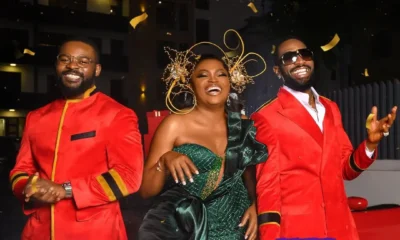

Funke Akindele Breaks Records Again As “Everybody Loves Jenifa” Surpasses ₦1 Billion In 12 Days
The latest cinematic triumph by Funke Akindele, “Everybody Loves Jenifa,” has shattered box office records, surpassing the ₦1 billion mark...
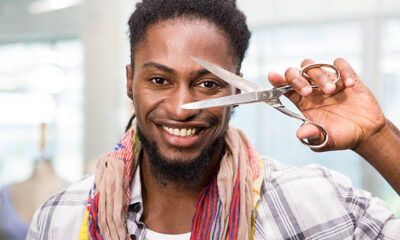

5 Reasons You Should Cut People Off Before 2025
As we approach 2025, the decision to cut people off becomes increasingly important for your personal growth and well-being. The...


Amad Diallo Determined To “Make History” With Struggling Manchester United
Amad Diallo, 22, has boldly declared his intention to “make history” with Manchester United, despite the club’s ongoing struggles in...
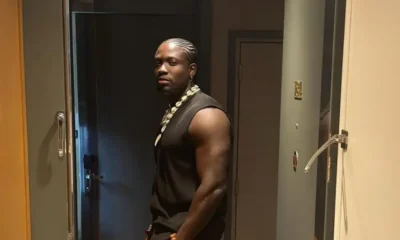

Police Deny Knowledge & Investigation Of VeryDarkMan’s Missing N180m
Martins Otse, popularly known as VeryDarkMan, sparked a social media frenzy on Friday when he announced that his NGO’s account...


Ex-Arsenal Star Ahmed Mohammed On Katsina Academy & Partnership With Mbappe’s AS Bondy
Ahmed Mohammed, a former Arsenal Academy and West Ham United youth prodigy, has passionately shared the inspiration behind founding the...


Olamide & Asake Officially Part Ways; Alleged Details Of Contract Termination Emerge
YBNL Music founder Olamide has approved the early contract termination of artist Asake, videowheelztv reports. The contract dissolution grants Asake...
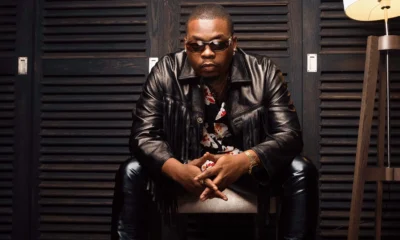

Flytime Fest: Wizkid, Omah Lay, Zlatan Perform As Gunna & Olamide Headline Event
Olamide thrilled fans at the 2024 Flytime Fest, marking the return of the highly anticipated annual festival. The Grammy-nominated rapper...


Dele Farotimi Breaks Silence After Release From Detention
Activist lawyer and author Dele Farotimi maintained his stance against Senior Advocate of Nigeria Afe Babalola during a press conference...


The Real Housewives Of Lagos Reveals Cast Members Ahead Of Season 3
The Real Housewives of Lagos will launch its season 3 on January 12, 2025. It will feature both returning stars...
-Ad-




Mercy Aigbe & Uzor Arukwe Lead A Story Of Drama And Suspense In “Thin Line”

Seyi Vibez’s “Different Pattern” Dominates Apple Music Nigeria’s 2024 Charts

Nigerian Content Creator, Taaooma Welcomes Her First Child

Davido Announces New Album “5ive” Set To Drop In 2025

Here Are The Most Streamed Gospel Artists On Spotify Africa

Davido Releases “Funds” Featuring Chike & OdumoduBlvck

Burna Boy Set To Release New Single, “Bundle” This December

“Everybody Loves Jenifa” Sells Out Ahead Of UK Premiere On December 20

Songs From Rema & Tems Make RollingStones Top Songs Of 2024

Discover The 4 Fun Places To Visit In Kaduna
Trending
-

 ENTERTAINMENT5 days ago
ENTERTAINMENT5 days agoPolice Deny Knowledge & Investigation Of VeryDarkMan’s Missing N180m
-

 SPORTS5 days ago
SPORTS5 days agoEx-Arsenal Star Ahmed Mohammed On Katsina Academy & Partnership With Mbappe’s AS Bondy
-

 MUSIC5 days ago
MUSIC5 days agoOlamide & Asake Officially Part Ways; Alleged Details Of Contract Termination Emerge
-

 MOVIES3 days ago
MOVIES3 days agoFunke Akindele Breaks Records Again As “Everybody Loves Jenifa” Surpasses ₦1 Billion In 12 Days
-

 SPORTS5 days ago
SPORTS5 days agoAmad Diallo Determined To “Make History” With Struggling Manchester United
-

 LIFESTYLE4 days ago
LIFESTYLE4 days ago5 Reasons You Should Cut People Off Before 2025
-

 SPORTS3 days ago
SPORTS3 days agoReferees To Explain VAR Decisions To Crowd In EFL Cup Semi-Finals Trial

